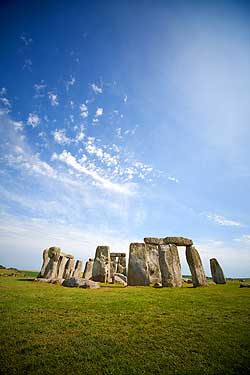
Stonehenge

Undoubtedly one of the UK's most instantly recognizable tourist attractions, Stonehenge is one of the top 'must see' sights for those visiting not just Bath and the West of England but the UK itself.
Whilst archaeologists still debate the reasons for its purpose (and how they actually managed to constuct it), Stonehenge is just one of several prehistoric monuments to be found in this area so stone afficionados can indulge themselves by visiting several sites with Celtic Horizons whilst those with tighter schedules can take in Stonehenge (and perhaps nearby Avebury or Salisbury) on either a guided tour, airport transfer tour or custom tour.
Tour Options
Stonehenge can be visited either on an airport transfer tour (when travelling to or from your Bath or West of England destination and a London airport), on one of Celtic Horizon's suggested tour routes or build it in to a custom tour around your own requirements - contact us for details and prices.
Please note that we only offer journeys and tours that are exclusive to your family or party: we do not operate scheduled shared tour bus services.
Stonehenge Websites
"Stonehenge is an ancient prehistoric monument located in the English county of Wiltshire, about 8 miles (13 km) north of the city of Salisbury. It is a ring of standing stones, which form a pattern of large stones called sarsens, which weigh up to 30 tons each, and smaller stones called bluestones. The stones are set in a circular pattern, with some arranged in horseshoe shapes.
Stonehenge was constructed in several stages, with the earliest stage dating back to around 3000 BC, and the final stage completed around 1500 BC. The purpose of the monument is not fully understood, but it is believed to have had religious, cultural, or astronomical significance.
One of the most impressive features of Stonehenge is the sheer size of the stones used in its construction. It is believed that the sarsen stones were transported to the site from Marlborough Downs, a distance of about 20 miles (32 km), while the bluestones may have been brought from the Preseli Mountains in Wales, over 150 miles (240 km) away.
Despite its age, Stonehenge has survived remarkably well, although some stones have fallen or been removed over the centuries. It is now a popular tourist attraction, and visitors can walk around the monument and learn more about its history and significance at the nearby visitor center."